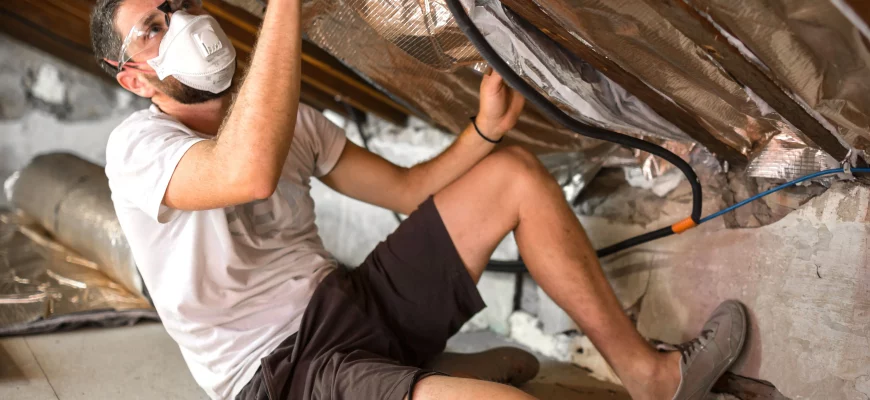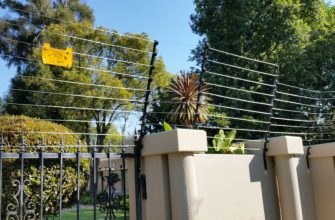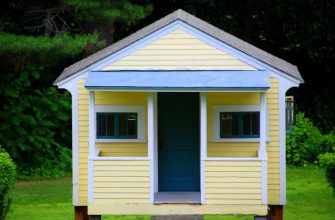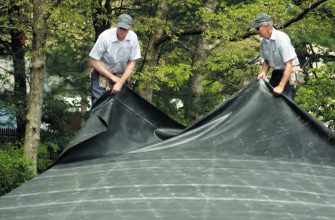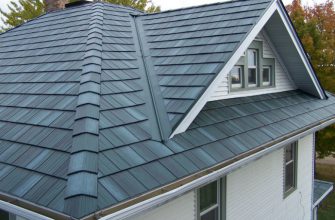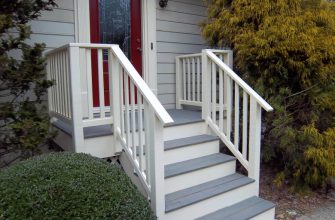Are you tired of the cold, damp environment under your mobile home? Insulating under a mobile home is the solution to an uncomfortable living space and high energy bills. The underbelly of a mobile home is vulnerable to moisture buildup and air leaks, leading to mold and high energy consumption. By insulating under your mobile home, you can improve comfort and energy efficiency while also preventing costly repairs in the future.
In this article, we will discuss the importance of insulating under a mobile home and provide a comprehensive guide on how to do it effectively. We will cover different types of insulation, the benefits of spray foam insulation, and tips for maintaining proper ventilation. Whether you’re a DIY enthusiast or prefer professional assistance, we have got you covered.
- Why Insulate Under a Mobile Home?
- Understanding Mobile Home Underbelly Insulation
- Types of Mobile Home Underbelly Insulation
- Types of Mobile Home Skirting Insulation
- Foam Panels
- Batt Insulation
- Foam Skirting
- Step-by-Step Guide: How to Insulate Under a Mobile Home
- Choosing the Best Insulation for Under a Mobile Home
- Benefits of Spray Foam Insulation Under a Mobile Home
- Enhancing Energy Efficiency with Mobile Home Floor Insulation
- Types of Mobile Home Floor Insulation
- How to Re-Insulate Mobile Home Floors
- Benefits of Mobile Home Floor Insulation
- Hiring Professionals or DIY: Which is the Right Choice?
- DIY Insulation
- Professional Insulation
- Insulation Repair for Mobile Homes
- Common Issues with Mobile Home Insulation
- Repairing Underbelly Insulation in Mobile Homes
- Restoring Insulation Affected by Moisture Damage
- Dealing with Pest Infestations in Insulation
- Additional Tips for Insulating Under a Mobile Home
- Replace Worn or Damaged Insulation Under Your Mobile Home
- Cheap Ways to Insulate Mobile Home Skirting
- Maintain Your Mobile Home Underbelly Insulation
- Choose the Right Insulation Installer
- Importance of Proper Ventilation
- How Ventilation Works
- How to Ensure Proper Ventilation
- Ensuring Heat Distribution Under a Mobile Home
- Insulating Heating Ducts
- Sealing Air Leaks
- Using Insulation Materials for Even Heat Distribution
- Finding Professional Assistance for Underbelly Insulation
- Conclusion
Why Insulate Under a Mobile Home?
Insulating under a mobile home is essential to maintain a comfortable living environment. In fact, mobile homes are more susceptible to temperature changes than conventional homes, making proper insulation critical. By insulating under your mobile home, you can enjoy various benefits, including:
- Improved comfort: Insulation helps regulate the temperature inside a mobile home, keeping the space warm during winters and cool during summers.
- Energy efficiency: Insulating your mobile home can lower your energy bills by reducing heating and cooling costs.
- Cost savings: By lowering energy bills, insulation can save homeowners money in the long run.
Don’t let a lack of insulation under your mobile home affect your comfort and increase your expenses. Consider insulating today for a more comfortable, energy-efficient home!
Understanding Mobile Home Underbelly Insulation
Insulating the underbelly of a mobile home is crucial for improving energy efficiency and keeping heating and cooling costs down. There are many different types of insulation that can be used underneath a mobile home, including foam insulation and fiberglass insulation.
It is important to choose the right type of insulation based on the climate and conditions of the area. For example, spray foam insulation is better for colder climates, while fiberglass insulation may be more suitable for warmer areas.
If insulation underneath a mobile home becomes damaged or worn, it is essential to replace it to maintain optimal energy efficiency. Mobile home underbelly insulation replacement can be a challenging task, but it is necessary to ensure the longevity of the home’s insulation.
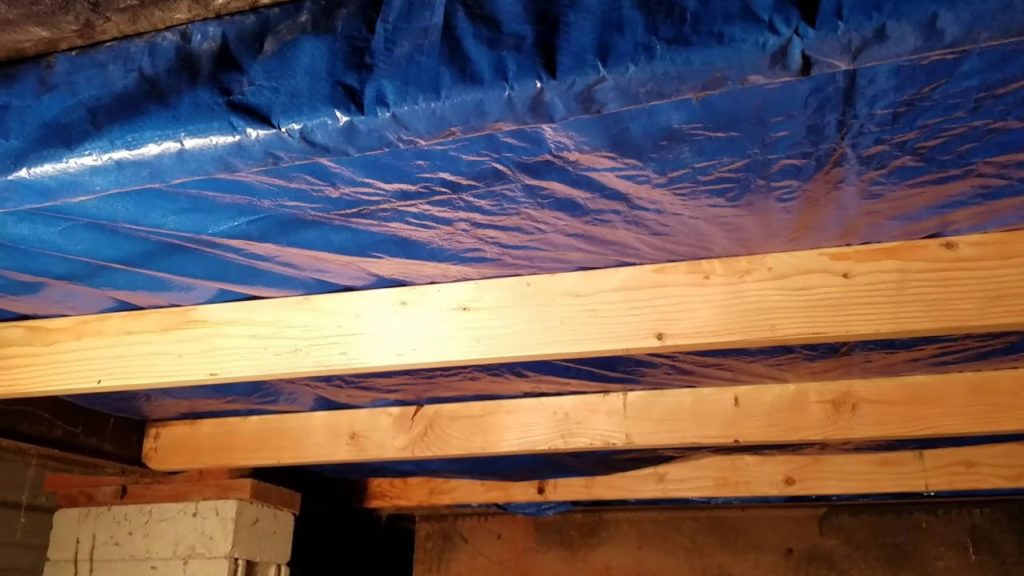
When replacing mobile home underbelly insulation, it is important to consider the material used, as well as the thickness and R-value. Investing in high-quality insulation can lead to long-term energy savings.
Types of Mobile Home Underbelly Insulation
| Insulation Type | Description |
|---|---|
| Fiberglass insulation | A common option for mobile home underbelly insulation, fiberglass is affordable, easy to install, and has a high R-value. |
| Foam insulation | Provides superior insulation and air sealing properties, making it ideal for colder climates. |
| Reflective insulation | Consists of layers of foil, plastic, and bubble wrap that reflect heat and can be an effective option for warmer climates. |
Consulting a professional can also be beneficial when choosing the right type of insulation and ensuring it is properly installed. With the right insulation and installation, mobile home underbelly insulation can significantly improve the comfort and energy efficiency of a home.
Types of Mobile Home Skirting Insulation
Mobile home skirting insulation plays a crucial role in maintaining a consistent temperature in your home. Various options are available to insulate mobile home skirting, each with its own benefits and drawbacks.
Foam Panels
Foam panels are a popular and effective option for mobile home skirting insulation. These panels come in different thicknesses and sizes and are easy to install. Foam panels create airtight insulation around the perimeter of the mobile home, reducing air infiltration and saving energy.
Batt Insulation
Batt insulation is another common way to insulate mobile home skirting. This type of insulation comes in rolls and is made of fiberglass or mineral wool. Batt insulation is easy to install but requires careful fitting to ensure there are no gaps or air leaks.
Foam Skirting
Foam skirting is a relatively new alternative for insulating mobile home skirting. This type of insulation involves installing foam boards around the perimeter of the home, creating a continuous insulation barrier. Foam skirting creates an airtight seal, providing excellent insulation and reducing energy costs. Foam skirting is also durable and weather-resistant, which means it can last longer than other types of insulation.
Insulating mobile home skirting is an investment that can go a long way in improving energy efficiency, reducing air leakage and making your home more comfortable all year round.
Step-by-Step Guide: How to Insulate Under a Mobile Home
Insulating under a mobile home can seem like a daunting task, but with the right approach, it can be done effectively. Follow these steps to ensure your mobile home is properly insulated:
- Prepare the area: Before you begin insulating, it’s essential to clear the area beneath your mobile home. Remove any debris, and make sure the ground is level and dry.
- Choose the right insulation: Different types of insulation have varying R-values, thermal performance, and installation requirements. Investigate which option is appropriate for your mobile home and budget.
- Measure and cut: Take accurate measurements of the space under your mobile home, and carefully cut the insulation to size using a utility knife or scissors.
- Seal gaps: Ensure there are no gaps between the insulation panels, as they allow heat to escape and energy efficiency to decline. Seal gaps using spray foam insulation or insulating tape.
- Add floor protection: Once the insulation is installed, add a barrier, such as a solid plastic sheet, to protect it from moisture and debris. Secure the barrier using staples, adhesive, or fasteners.
- Insulate your mobile home skirting: Insulating the skirting of your mobile home is an important step in maximizing energy efficiency. Choose the suitable type of insulation and follow the installation instructions.
With these steps, you can complete the insulation process under your mobile home. If you’re still unsure about how to proceed, seek assistance from professionals.
An effectively insulated mobile home can dramatically improve energy efficiency and comfort.
Choosing the Best Insulation for Under a Mobile Home
Choosing the best insulation for under a mobile home is crucial to achieving maximum energy efficiency and comfort. There are various factors to consider when selecting insulation, such as R-value, moisture resistance, and cost-effectiveness.
R-value: The insulation’s R-value is its resistance to heat flow, and the higher the R-value, the greater the insulating power. When choosing insulation, make sure to select one with a high R-value to reap the maximum benefits of insulation.
Moisture resistance: Moisture resistance is essential for under a mobile home, as it can prevent mold growth, rotting, and damage to your insulation. Look for insulation that has moisture-resistant properties to avoid these issues in the future.
Cost-effectiveness: While it’s tempting to skimp on insulation costs, remember that good quality insulation can save you significant money on your energy bills in the long run. Make sure to balance cost with quality to get the best value for your money.
When choosing insulation, consider materials such as foam insulation, fiberglass insulation, and spray foam insulation. Each type has its benefits and drawbacks. Foam insulation offers the highest R-value, while fiberglass insulation is the most cost-effective. On the other hand, spray foam insulation is an excellent option for sealing air leaks and moisture resistance.
Another important aspect to consider is the installation process. When installing insulation under a mobile home, it’s best to consult a professional insulation contractor to ensure that the job is done correctly.
| Pros | Cons | |
|---|---|---|
| Foam Insulation | High R-value, excellent thermal performance, moisture-resistant | Expensive, difficult to install |
| Fiberglass Insulation | Cost-effective, readily available, easy to install | Low R-value, not moisture-resistant, may cause skin irritation during installation |
| Spray Foam Insulation | High R-value, excellent air sealing and moisture resistance, can be used in hard-to-reach areas | Expensive, difficult to remove, requires professional installation |
Overall, the best insulation for under a mobile home varies based on personal circumstances. Factors like budget, insulation requirements, and installation process determine the appropriate choice. With the right insulation and installation, mobile homeowners can enjoy significant energy savings and increased comfort in their homes.
Benefits of Spray Foam Insulation Under a Mobile Home
When it comes to insulating under a mobile home, there are a variety of options available, but one that stands out is spray foam insulation. Spray foam insulation is an effective way to ensure maximum energy efficiency and comfort in your mobile home. Here are some of the benefits of using spray foam insulation under a mobile home:
- Superior Insulation: Spray foam insulation provides superior insulation compared to traditional insulation materials such as fiberglass or batts. It creates an airtight seal that helps to prevent heat loss and air infiltration, ensuring that your home stays warm in the winter and cool in the summer.
- Durable: Spray foam insulation is durable and long-lasting, which means that you won’t have to worry about replacing it anytime soon. It can withstand harsh weather conditions and is resistant to mold and pests.
- Improved Air Quality: Spray foam insulation helps to improve air quality by sealing off any gaps or cracks that could allow pollutants and allergens to enter your home. This can be particularly beneficial for those with allergies or respiratory issues.
- Cost-Effective: Although spray foam insulation tends to be more expensive than traditional insulation materials, it is often more cost-effective in the long run. It can help to reduce your energy bills by up to 50%, which can result in significant savings over time.
When installing spray foam insulation, it’s important to work with a professional contractor who has experience working with this material. They will be able to ensure that the insulation is installed properly and that the job is completed safely.
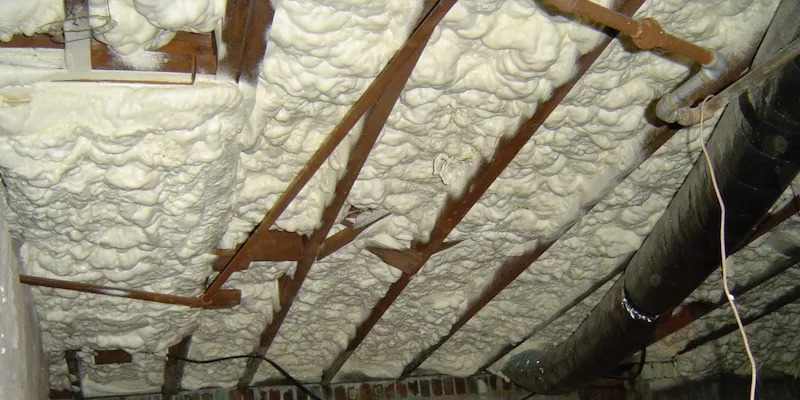
Enhancing Energy Efficiency with Mobile Home Floor Insulation
Insulating the floors of a mobile home is a crucial aspect of improving energy efficiency and maximizing comfort in your home. Without proper insulation, heat can escape through the floor, leading to chilly toes and higher energy bills. In this section, we will explore different insulation options and guide you on how to re-insulate existing floors for better energy efficiency.
Types of Mobile Home Floor Insulation
When considering insulation options for mobile home floors, fiberglass and foam insulation are popular choices. Fiberglass insulation is readily available and an affordable option but may not be suitable for moisture-prone areas. Foam insulation is a more durable and moisture-resistant option but often comes at a higher cost. Additionally, foam boards or spray foam insulation can also be used for improved energy efficiency.
How to Re-Insulate Mobile Home Floors
To re-insulate existing floors, the first step is to remove the existing insulation material. Then, clean the floor thoroughly and inspect for any damage. Next, measure the area to determine the amount of new insulation material needed. Lastly, install the new insulation material carefully, making sure there are no gaps or air leaks. Consider hiring professionals for a more efficient installation process.
Benefits of Mobile Home Floor Insulation
Insulating mobile home floors can provide various benefits, including enhanced energy efficiency, more comfortable living spaces, and reduced utility bills. Proper insulation can also help prevent unwanted moisture and mold growth and ultimately extend the lifespan of the entire home.
If you’re looking to improve energy efficiency in your mobile home, don’t overlook the importance of insulating the floors. With proper insulation, you can enjoy a more comfortable, energy-efficient home while saving money on your utility bills.
Hiring Professionals or DIY: Which is the Right Choice?
When it comes to insulating under a mobile home, homeowners often face the question of whether to hire professionals or take on the project themselves. Let’s examine the pros and cons of each option to determine the right choice.
DIY Insulation
One advantage of DIY insulation is cost savings. By purchasing the insulation materials themselves, homeowners can avoid paying for labor costs. In addition, the homeowner has complete control over the project, ensuring that it is done to their standards. However, DIY insulation can have downsides, including:
- Increased risk of injury or accidents during the project
- Difficulty identifying and addressing underlying problems, such as moisture damage
- Limited access to professional equipment and expertise
It is important to weigh the benefits and risks of DIY insulation before deciding to take on the project. Homeowners who decide to proceed with DIY insulation should research thoroughly, select high-quality insulation materials, and follow proper safety protocols.
Professional Insulation
Professional insulation services offer several advantages, including:
- Experience and expertise in identifying and resolving underlying insulation problems.
- Access to specialized equipment and high-quality materials.
- Reduced risk of accidents and injuries during the project.
However, professional insulation services can be more expensive than DIY insulation, and homeowners relinquish some control over the project. It is important to research and select reputable companies or contractors and to communicate clearly throughout the project to ensure that expectations are met.
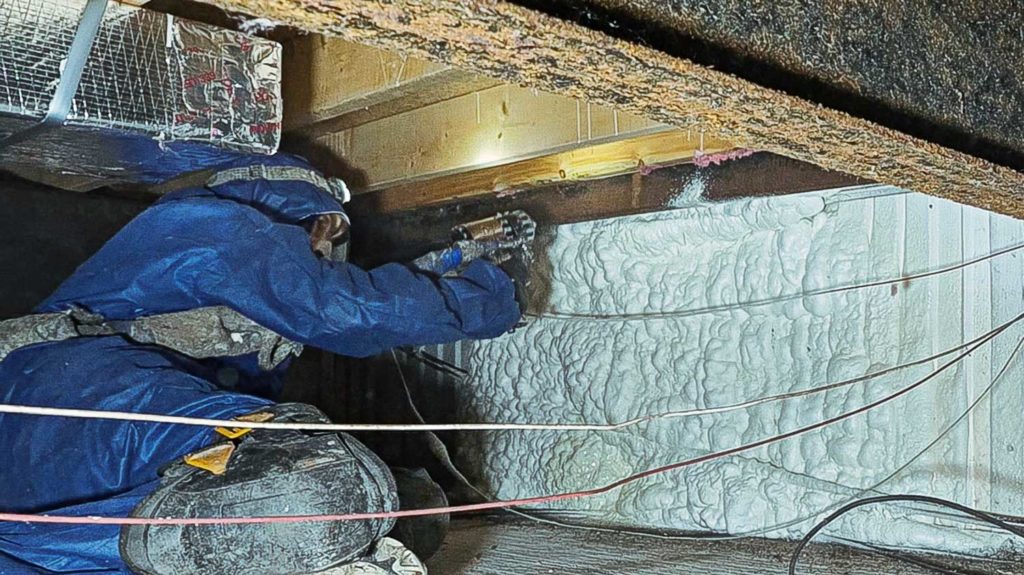
Insulation Repair for Mobile Homes
While proper insulation offers numerous benefits, damage can occur over time due to various factors. In this section, we’ll discuss how to repair insulation in mobile homes, focusing on underbelly insulation repairs and common issues that may arise.
Common Issues with Mobile Home Insulation
Mobile home insulation can face a multitude of problems, leading to compromised energy efficiency and lower comfort levels. Some of the most common issues include:
- Moisture damage.
- Pest infestations.
- Insulation deterioration.
Each of these issues can be addressed through targeted repair solutions, which we’ll explore in more depth below.
Repairing Underbelly Insulation in Mobile Homes
Underbelly insulation is a key component in a mobile home’s energy efficiency, protecting the pipes and ductwork while keeping the cold air out. When the underbelly insulation is damaged, it can lead to issues such as frozen pipes and increased energy bills. Some common ways to repair underbelly insulation include:
- Patching damaged areas with heat tape or spray foam insulation.
- Replacing the entire underbelly insulation system.
- Installing new insulation materials such as fiberglass batts or foam insulation boards.
For larger repairs, it’s recommended to consult with a professional to ensure that the insulation is properly installed and efficient.
Restoring Insulation Affected by Moisture Damage
Moisture damage can negatively impact the integrity and functionality of insulation, leading to a complete deterioration of the material. In some cases, drying out the insulation and repairing the source of the moisture is enough to restore it. However, for more severe cases, it may be necessary to replace some or all of the affected insulation.
Dealing with Pest Infestations in Insulation
Mobile homes can be susceptible to pest infestations, which can cause damage to insulation and other areas. For example, rats and other rodents may gnaw through insulation, while insects and other pests can burrow into the material. In order to address pest infestations in insulation, it’s important to call in professional pest control services to eradicate the pests and repair any damage they may have caused. Afterwards, the insulation should be checked for damage and repaired or replaced as needed.
Additional Tips for Insulating Under a Mobile Home
Insulating under a mobile home can be a challenging task, but with the right techniques, it can be done effectively and efficiently. Here are some additional tips and tricks for enhancing insulation effectiveness:
Replace Worn or Damaged Insulation Under Your Mobile Home
If your mobile home insulation has become worn, damaged or saturated with water, it is crucial to replace it. Failure to replace old insulation can lead to various issues, including increased energy costs, moisture build-up, and a decrease in indoor air quality. To replace your insulation, remove the old insulation, clean the area, and install new insulation using proper techniques.
Cheap Ways to Insulate Mobile Home Skirting
If you are looking for cost-effective ways to insulate your mobile home skirting, consider using bubble wrap, foam board insulation, or reflective insulation. These materials are affordable, lightweight, and easy to install. For instance, you can attach foam board insulation panels to the floor of the mobile home using adhesive tape, spray adhesive, or insulation anchors.
Using recycled materials like denim, newspapers or even bubble wrap can be an eco-friendly and inexpensive way to insulate your mobile home skirting.
Maintain Your Mobile Home Underbelly Insulation
To ensure that your insulation remains effective, it is essential to maintain it properly. Regular inspection and maintenance can prevent problems such as water damage, mold, and pest infestations. Inspect the insulation regularly for signs of wear and tear, damage, and moisture buildup. Ensure proper ventilation, seal all air leaks, and fix any damage promptly.
Choose the Right Insulation Installer
When hiring professionals for under mobile home insulation replacement or repair, choose reputable insulation companies with more years of experience. Check their insurance, ask for references, and ensure they use quality materials.
By following these additional tips, you can ensure a more efficient and long-lasting insulation under your mobile home.
Importance of Proper Ventilation
Insulating under a mobile home is important for improving energy efficiency and comfort, but it must be done correctly to avoid causing problems such as moisture buildup and mold growth. That’s why proper ventilation is essential.
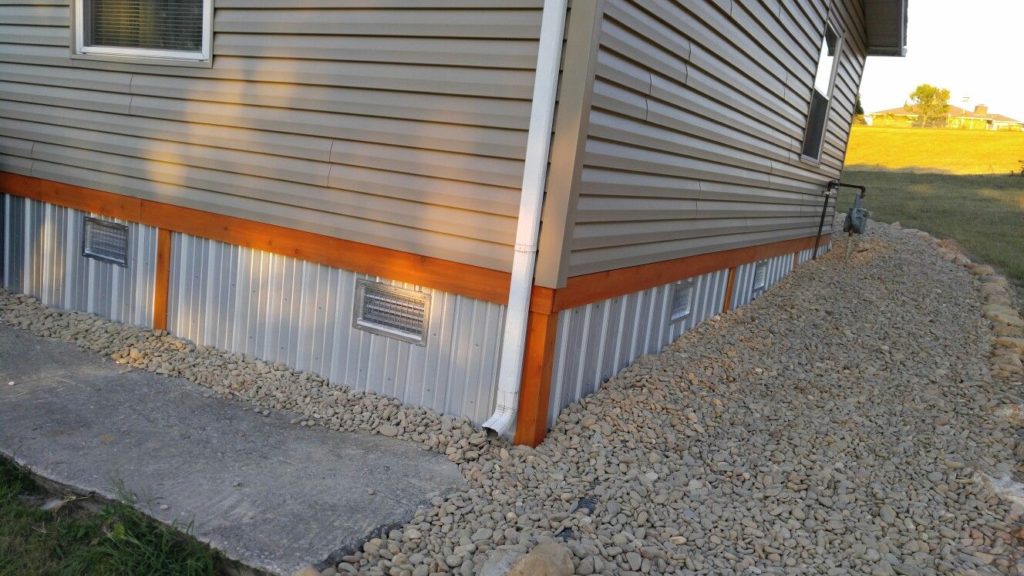
Without adequate ventilation, it can lead to a buildup of moisture and mold growth, which can cause health problems and damage the structural integrity of the home. Furthermore, it can negate the benefits of insulation, leading to higher energy bills and reduced comfort.
How Ventilation Works
Ventilation provides a way for excess moisture to escape from the underbelly of the mobile home. This is typically achieved through vents installed in the skirting around the home or in the underbelly enclosure. The passing air replaces damp air and helps keep it dry, preventing mold growth and other moisture-related issues.
Ventilation is especially important if you use mobile home belly insulation. Since the insulation can trap moisture, ventilation provides a way for trapped moisture to escape, keeping the insulation dry and effective.
How to Ensure Proper Ventilation
You can ensure proper ventilation by:
- Installing vents or fans in the skirting or underbelly.
- Cleaning and maintaining vents regularly to prevent clogs.
- Using moisture-resistant underbelly materials.
- Placing vents or fans in strategic locations to promote airflow and moisture removal.
Proper ventilation is essential to prevent moisture buildup and mold growth, which can cause health problems and damage your home.
Ensuring Heat Distribution Under a Mobile Home
Proper heat distribution is crucial for keeping your mobile home warm and comfortable during the colder months. When insulating under a mobile home, it’s important to incorporate techniques that promote even heat distribution throughout the space.
Insulating Heating Ducts
Insulating your heating ducts is an effective way to prevent heat loss and ensure proper heat distribution. Use a high-quality insulation material, such as fiberglass, to wrap around the ducts. This will help maintain the temperature of the warm air flowing through the ducts and reduce the amount of heat lost through the walls of the ducts.
Sealing Air Leaks
Air leaks can lead to heat loss, wasted energy, and increased utility bills. Use sealant and weatherstripping to seal any gaps or cracks where air can escape, such as around doors and windows or holes for utility lines. This will help keep warm air inside and cold air outside, promoting even heat distribution and a more comfortable living space.
Using Insulation Materials for Even Heat Distribution
Choosing the right insulation materials for under a mobile home is also important for even heat distribution. Avoid using materials that compress easily or are susceptible to moisture damage, as this can reduce their insulating effectiveness and lead to uneven heat distribution. A good option is foam board insulation, which is durable, moisture-resistant, and can promote even heat distribution.
Finding Professional Assistance for Underbelly Insulation
If you’re not confident in completing the mobile home underbelly insulation project on your own, professional assistance is available. Hiring experts can ensure the insulation is installed properly, improving your home’s energy efficiency and comfort.
To find reliable contractors or companies that specialize in mobile home underbelly insulation, you can start by searching online for “mobile home underbelly insulation near me.” This search should yield several local professionals who offer this service.
When selecting a contractor, it’s important to do your due diligence and choose a reputable professional. Here are some tips:
- Request references and check them. Talk to previous clients to get an idea of their satisfaction level and the quality of work.
- Ensure the contractor is licensed and insured. This will protect you in case of any accidents or damage during the project.
- Get multiple quotes from different professionals to compare pricing and services offered.
- Ask for a detailed outline of the project and the materials used. Make sure you understand what you are paying for.
In conclusion, hiring a professional for underbelly insulation is a great option for those who are not confident in their DIY skills. By following these tips, you can find a reliable contractor who will ensure your mobile home is properly insulated.
Conclusion
In conclusion, insulating under a mobile home is an essential step to improve comfort, energy efficiency, and overall quality of life. By selecting the right insulation materials and following the smart solutions and techniques outlined in this article, homeowners can enjoy a warmer, more efficient home that saves them money on energy bills.
Remember, proper insulation not only keeps your home comfortable and energy-efficient but also protects it from potential damage caused by moisture, pests, or heat loss. Don’t hesitate to take action on insulating under your mobile home today and enjoy the benefits for years to come.

